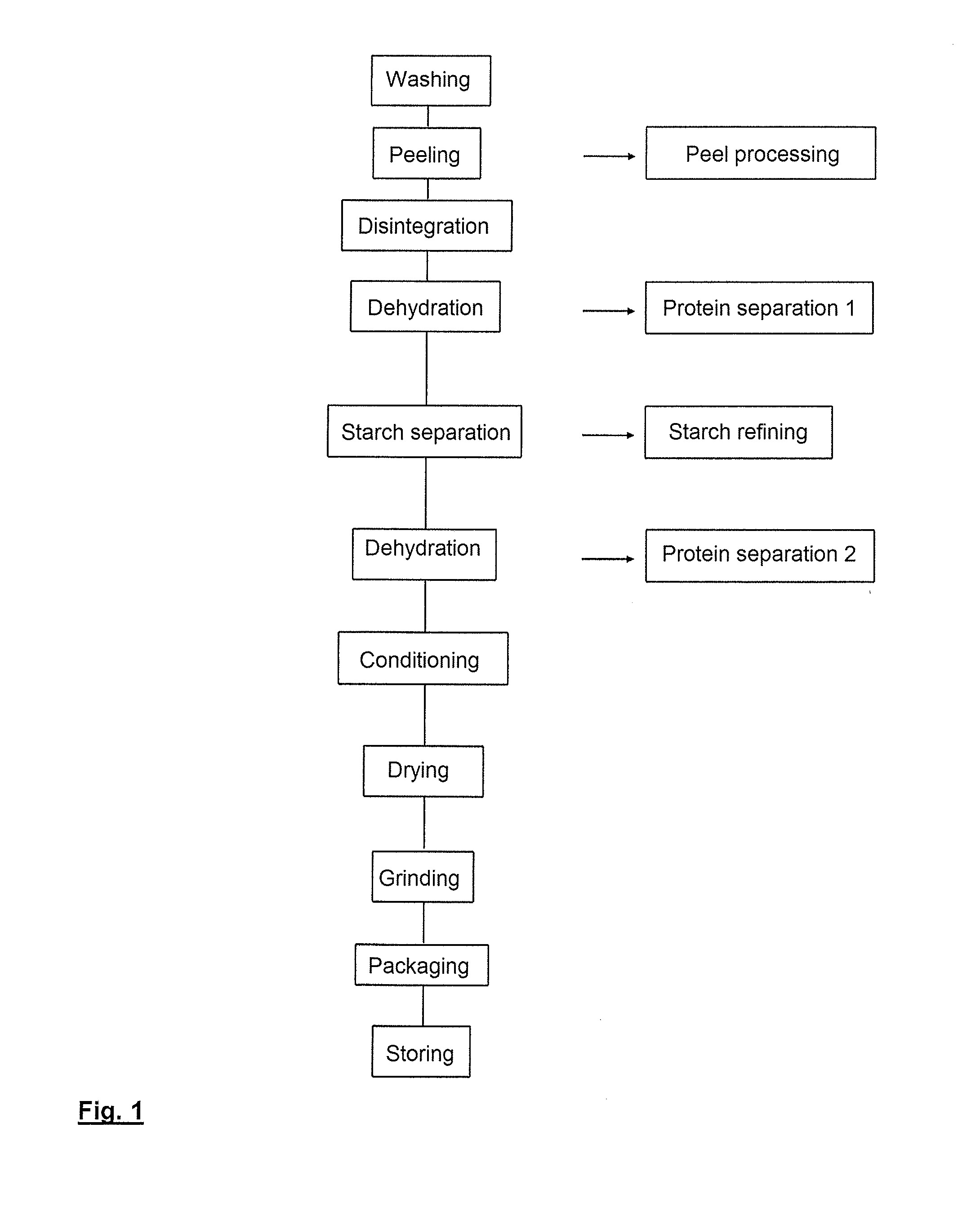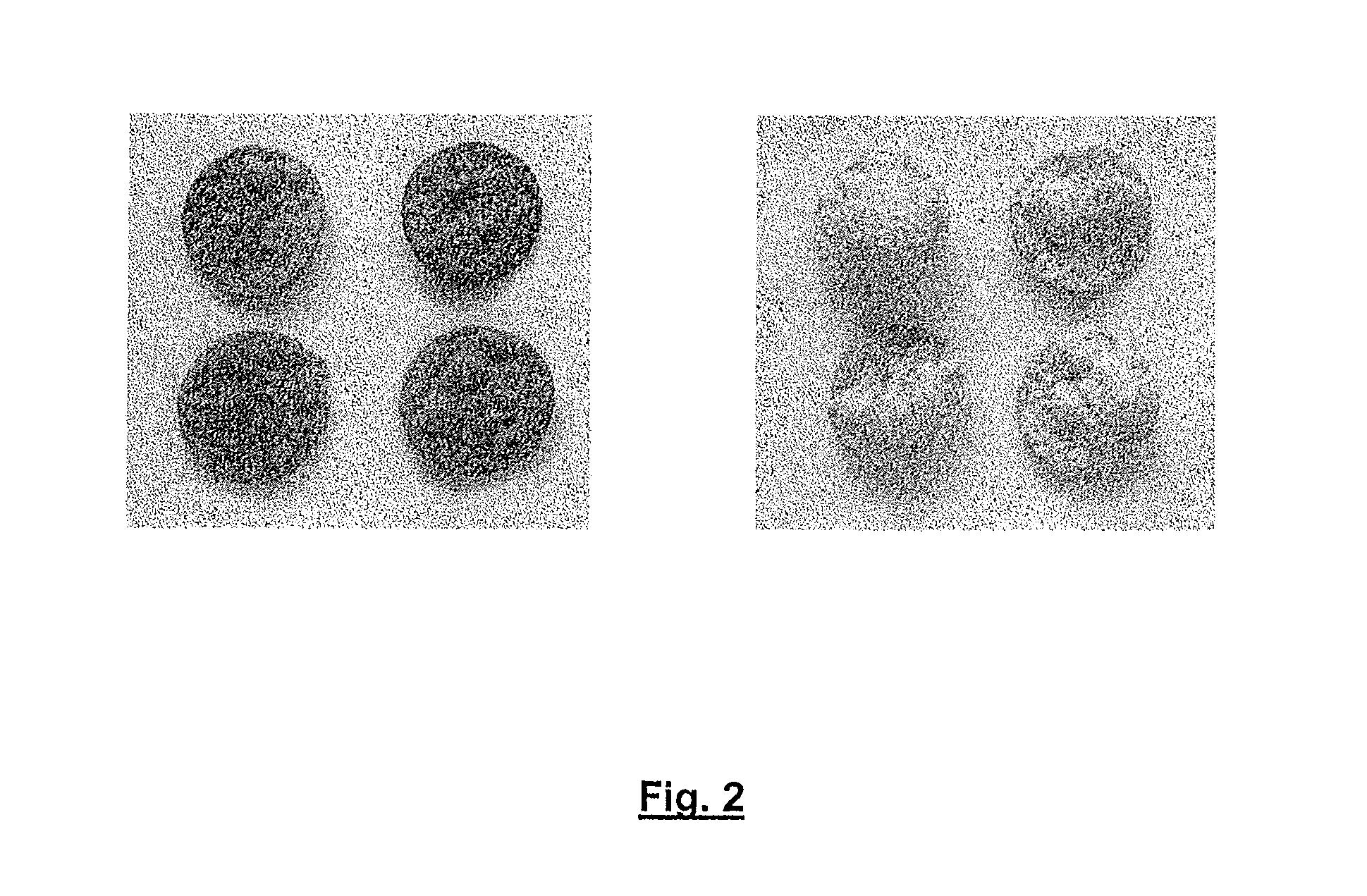Food product made from plant parts containing starch and method for the production of said food product
- Summary
- Abstract
- Description
- Claims
- Application Information
AI Technical Summary
Benefits of technology
Problems solved by technology
Method used
Image
Examples
example 1
Depletion of Protein, Starch and Fruit Water Components
[0071]10 kg of potatoes of the sort Festin were cleaned, peeled and graded by means of a grader into a grated plant parts with a particle size of between 0.02 and 5 mm. After setting the grated plant parts concentration to 20% of dry matter (if necessary by adding water), 100 mg / l of sodium hydrogen sulfite were added. After adding 100 mg / l of sodium hydrogen sulfite, the fruit water of this grated plant parts suspension was separated by means of a centrifuge and drained for the purpose of further protein extraction. In order to deplete the starch, the remaining grated plant parts was now treated multiple times with fresh water at temperatures between 10° C. and 30° C. inside a centrifuge screen with a slot width of 110 p.m.
[0072]The depleted grated plant parts was dehydrated once more by means of a centrifuge in order to further increase the solids content, and was subsequently put into a heatable mixing container, where it was...
example 2
Depletion of Protein, Starch and Fruit Water Components
[0076]10 kg of potatoes of the sort Festin were cleaned, peeled and graded by means of a grader into a grated plant parts with a particle size of between 0.02 and 5 mm. After setting the grated plant parts concentration to 20% of dry matter (if necessary by adding water), 100 mg / l of sodium hydrogen sulfite and 1 g of ascorbic acid were added. The grated plant parts thus treated was dehydrated by means of a centrifuge until it had a solids content of approximately 40% and the fruit water was separated for the purpose of further protein extraction.
[0077]In order to deplete the starch, the remaining grated plant parts was treated multiple times in a centrifugal sieve with fresh water at temperatures between 10° C. and 30° C. until the residual starch content determined by the polarimetric process according to Ewers was approximately 50%.
[0078]The depleted grated plant parts with a solids content of approximately 10% was dehydrated...
example 3
Depletion of Protein and Fruit Water Components
[0082]10,000 kg of potatoes of the sort Festin were cleaned, peeled and graded by means of a grader into a grated plant parts with a particle size of between 0.02 to 3 mm. The water content of the grated plant parts was examined and if necessary readjusted by the addition of water to approximately 22% of dry matter.
[0083]After adding approximately 200 mg / l of ascorbic acid, the grated plant parts was guided over a decanter centrifuge, where the “fruit water” was separated and supplied to further protein extraction—without separating the free starch granules from the suspended grated plant parts.
[0084]Subsequently, the grated plant parts that was depleted of protein and soluble fruit water components in a controlled manner was transferred onto a roller dryer where it was dried until it had a residual moisture of approximately 5.5%.
[0085]The grated plant parts film was removed from the drying drum, transferred into a screening machine by ...
PUM
 Login to View More
Login to View More Abstract
Description
Claims
Application Information
 Login to View More
Login to View More - R&D
- Intellectual Property
- Life Sciences
- Materials
- Tech Scout
- Unparalleled Data Quality
- Higher Quality Content
- 60% Fewer Hallucinations
Browse by: Latest US Patents, China's latest patents, Technical Efficacy Thesaurus, Application Domain, Technology Topic, Popular Technical Reports.
© 2025 PatSnap. All rights reserved.Legal|Privacy policy|Modern Slavery Act Transparency Statement|Sitemap|About US| Contact US: help@patsnap.com


